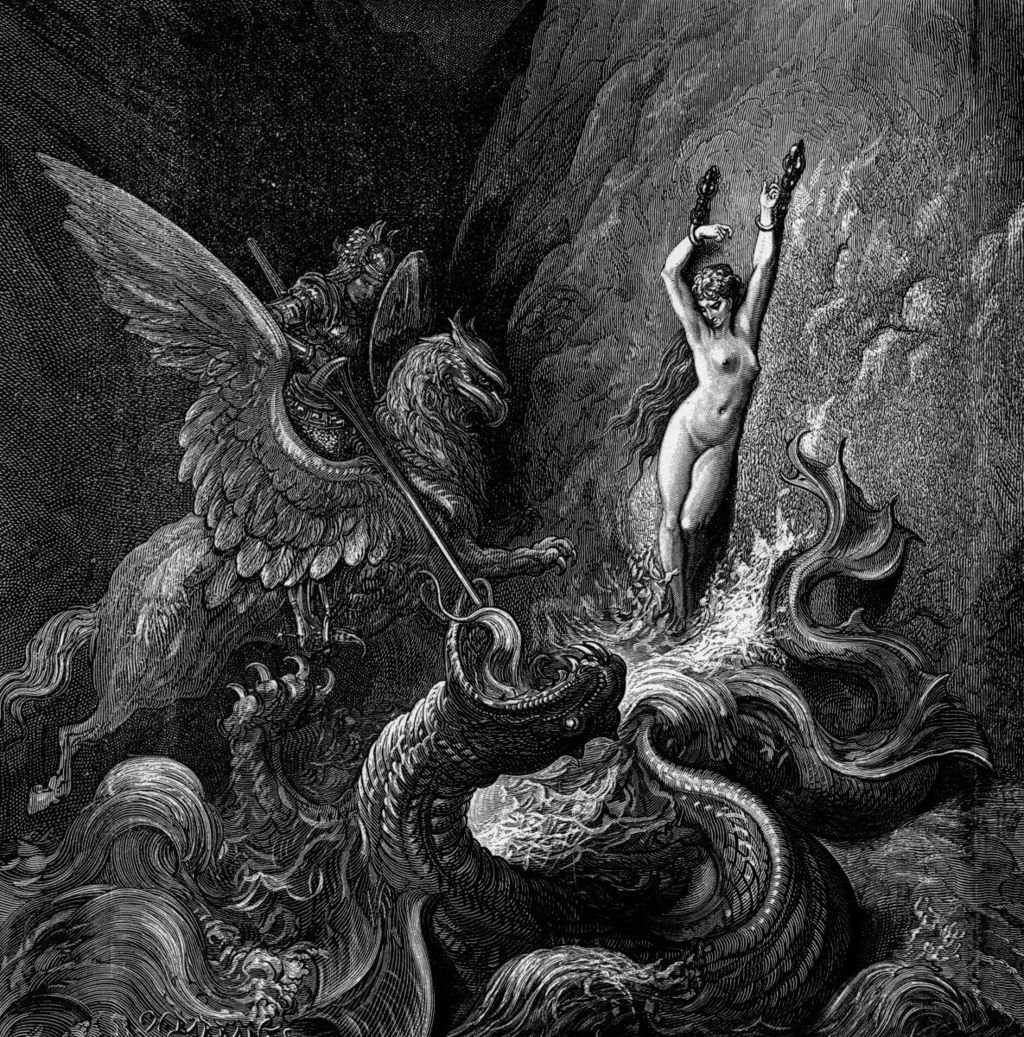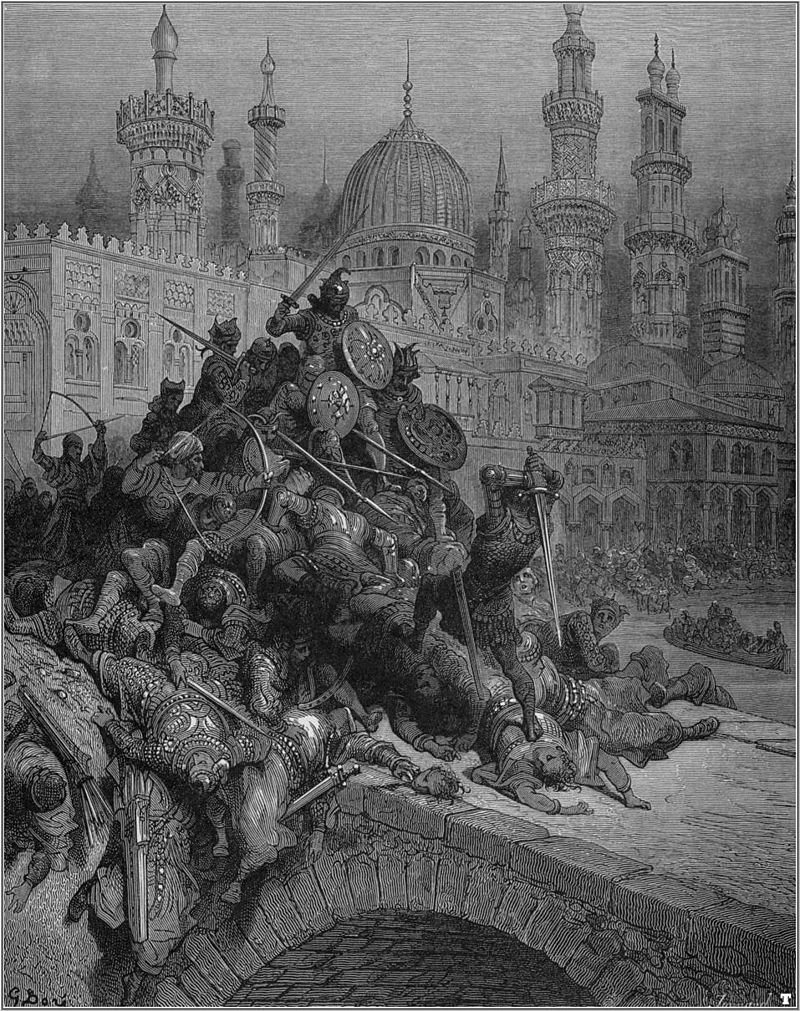Gustave Doré: An Artist For the Ages
“I began to have nightmares of the most hideous description, peopled with things which I called ‘night-gaunts’—a compound word of my own coinage. I used to draw them after waking (perhaps the idea of these figures came from an edition de luxe of Paradise Lost with illustrations by Doré, which I discovered one day in the east parlour).” — H.P. Lovecraft to Rheinhart Kleiner, November 15, 1916
There’s something those fellows catch – beyond life – that they’re able to make us catch for a second. Doré had it.” — Lovecraft, "Pickman’s Model”, 1926
Gustave Doré was born on this date in 1832. Wildly popular in his own lifetime, Doré’s art continues to grace book covers and galleries to this day. He laid many of the foundations of the fantasy art we enjoy right now in the twenty-first century. However, Gustave’s success was hard-earned and his legacy continues to be undervalued by elite art critics.
Right off the bat, I'm going to compare Doré to Frazetta. Both were child prodigies. Gustave started drawing when he was five. At the age of eight he drew an illustrated story twenty-eight pages long...all without photoshop. At age nine--when most aspiring 'artists' are barely past scribbling stick figures--Doré made his first attempt at illustrating Dante Alighieri's The Divine Comedy. You might as well aim high.
Just like Frazetta. Doré undertook private art schooling at an early age, attending the Lycée of Bourg-en-Bresse and studied subsequently at the Lycée Charlemagne.
While still in his teens, Gustave began working as a professional artist. As the Lambiek Comiclopedia website puts it:
"Through his father, the fifteen-year-old Doré got in touch with Charles Philipon, publisher of the satirical magazine Le Journal Pour Rire. In 1847 the youngster published his first caricatures for this magazine under the title 'Grotesques', soon establishing himself as their house cartoonist. His contract stipulated that Philipon had to publish at least one of Doré's drawings a week. This clause was a stroke of luck, because Doré's father passed away soon after, making him the only breadwinner of the family."
I know several people in SFF litcrit/fandom who pooh-pooh one artist or another because said artist "is just some comic book guy". I've shut down every one of 'em by pointing out that Frank Frazetta started out in comics and stayed in comics for quite awhile. Doré not only started out in comics, he is widely considered one of the pioneers of the entire medium. Frazetta began his career in the medium that Doré helped found. Lambiek Comiclopedia has written a thorough article all about it. Check it out here.
Gustave branched out into book illustration, doing the art for a popular edition of Gargantua and Pantagruel by Rabelais in 1854. These were unabashed fantasy tales. Doré would continue to illustrate fantasy fiction until the end of his career. With that success to his credit, Gustave immediately turned to his dream of illustrating Dante's The Divine Comedy.
As The World of Dante site reveals:
"Finding it difficult to secure a publisher willing to take on the expense of producing the expensive folio edition the artist envisioned, Doré himself financed the publication of the first book of the series, Inferno, in 1861. The production was an immediate artistic and commercial success. Buoyed by the popularity of Doré's edition of the Inferno, Hachette published Purgatorio and Paradiso in 1868 as a single volume. Subsequently, Doré's Dante illustrations appeared in roughly 200 editions, with translations from the poet's original Italian available in multiple languages."
Below is a gallery of Doré's work, presented in roughly chronological order so that the evolution of his style can be viewed to best effect.
Inferno (1857)
Purgatory (1866)
Paradise (1866)
Don Quixote (1863)
Paradise Lost (1866)
Orlando Furioso (1877)
Happy birthday, Gustave.



















